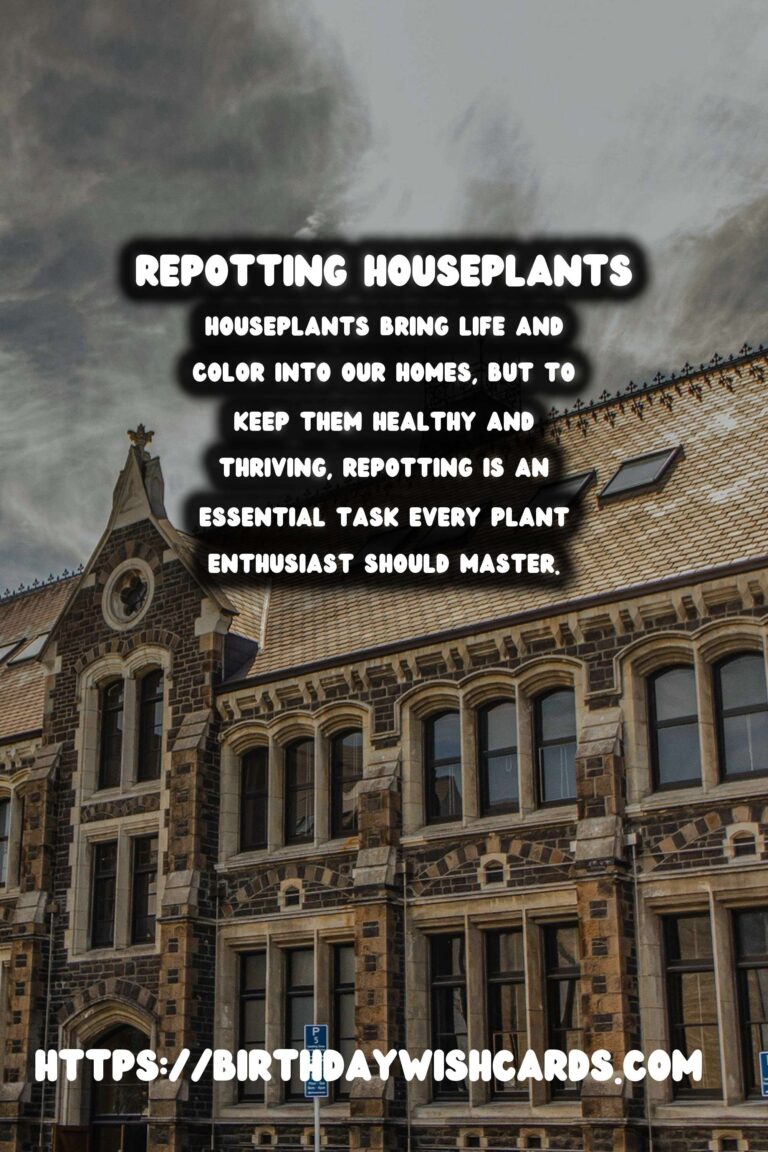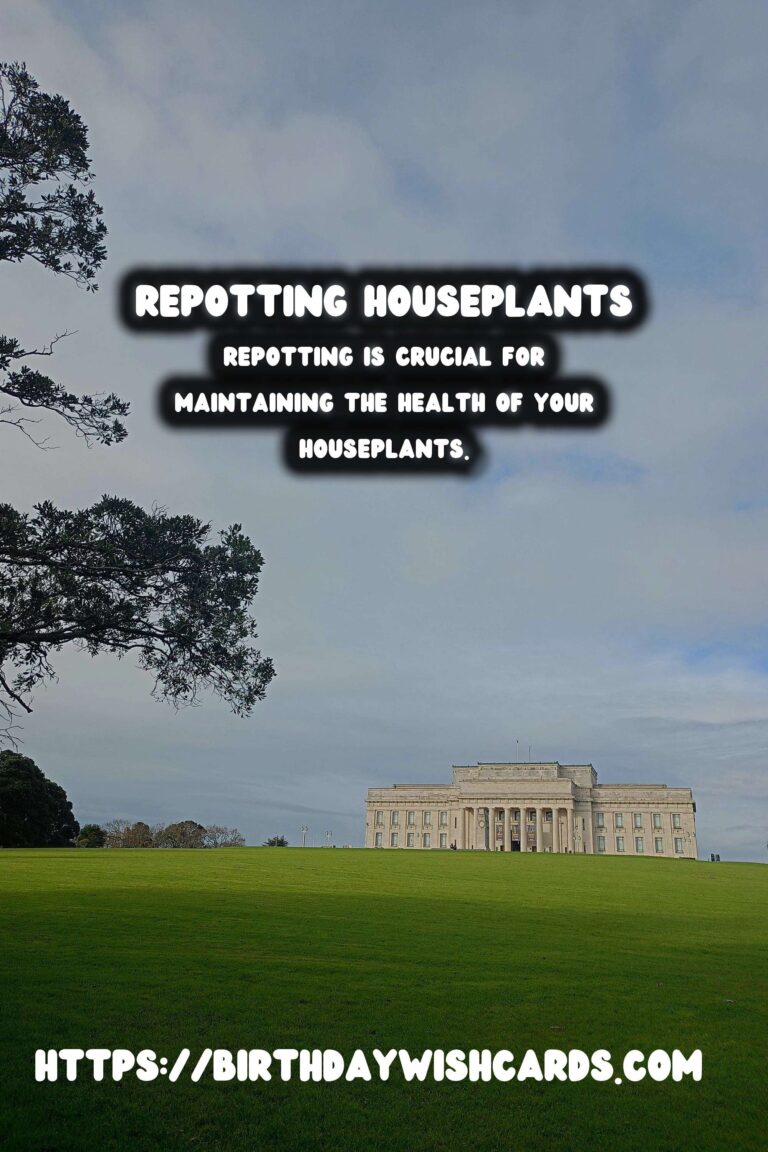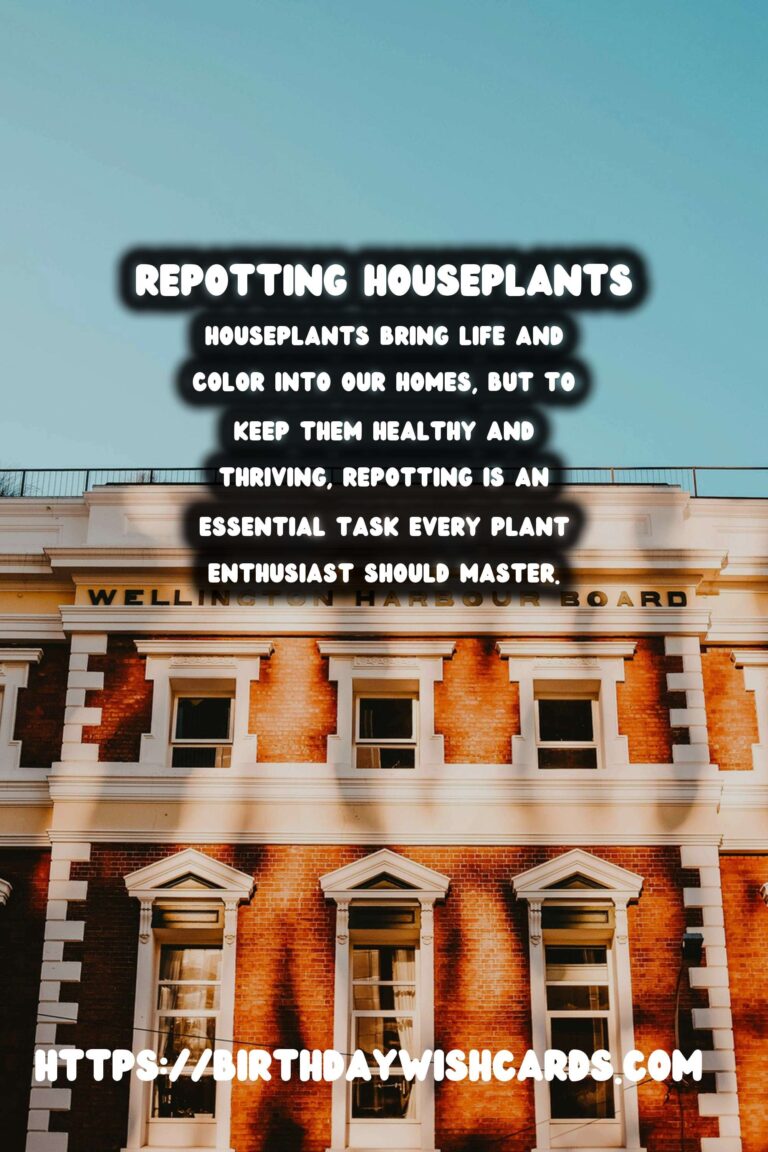
Houseplants bring life and color into our homes, but to keep them healthy and thriving, repotting is an essential task every plant enthusiast should master. In this comprehensive guide, we’ll explore when and how to repot your houseplants effectively.
Why Repotting is Important
Repotting is crucial for maintaining the health of your houseplants. As plants grow, their roots require more space, and the soil loses its nutrients over time. By repotting, you provide your plants with fresh soil, better nutrients, and adequate room for growth.
Signs That Your Houseplant Needs Repotting
Understanding when your plant needs repotting is key to preventing stress and promoting growth. Here are some indicators:
- Roots are growing out of the drainage holes.
- The plant is top-heavy and tends to tip over.
- The growth rate has significantly slowed down.
- Water isn’t absorbing well and pools on the surface.
- The plant is outgrowing its pot.
Choosing the Right Time to Repot
The best time for repotting is during the spring and early summer. During these seasons, plants enter a phase of active growth, allowing them to recover quickly from any stress caused by repotting.
How to Repot Your Houseplant
Now that you know when to repot your houseplants, let’s move on to the step-by-step process of repotting:
Step 1: Prepare Your Tools and Materials
Gather the necessary tools and materials: a new pot that’s 1-2 inches larger in diameter than the current pot, high-quality potting soil, scissors or pruners, and a small trowel.
Step 2: Remove the Plant from Its Current Pot
Gently turn your plant on its side and tap the pot’s bottom. If your plant is stubborn, use a knife along the pot’s edge to loosen it. Carefully slide the plant out, supporting the base with your hand.
Step 3: Inspect and Prune
Examine the roots for any signs of damage or rot. Trim away dead or decayed roots with clean scissors. This helps promote healthy growth.
Step 4: Prepare the New Pot
Place a layer of fresh potting soil at the bottom of the new pot. Position your plant in the center, ensuring it sits at the same depth as it did in the old pot.
Step 5: Refill with Fresh Soil
Fill in the pot with additional soil, leaving about an inch of space below the rim for watering. Lightly press the soil to eliminate air pockets but avoid compacting it too much.
Step 6: Water Thoroughly
Water your newly repotted plant generously until water drains from the bottom. This helps settle the soil around the roots and provides initial moisture.
Aftercare Tips
Avoid placing your plant in direct sunlight immediately after repotting, as the plant might be sensitive during recovery. Maintain consistent watering and monitor for any signs of stress or shock.
Conclusion
Repotting is an essential skill for every plant parent, contributing to the health and vitality of your indoor garden. By following our guide, you’ll ensure your houseplants have the best conditions to grow and flourish.
Houseplants bring life and color into our homes, but to keep them healthy and thriving, repotting is an essential task every plant enthusiast should master. Repotting is crucial for maintaining the health of your houseplants. 









#Houseplants #GardeningTips




